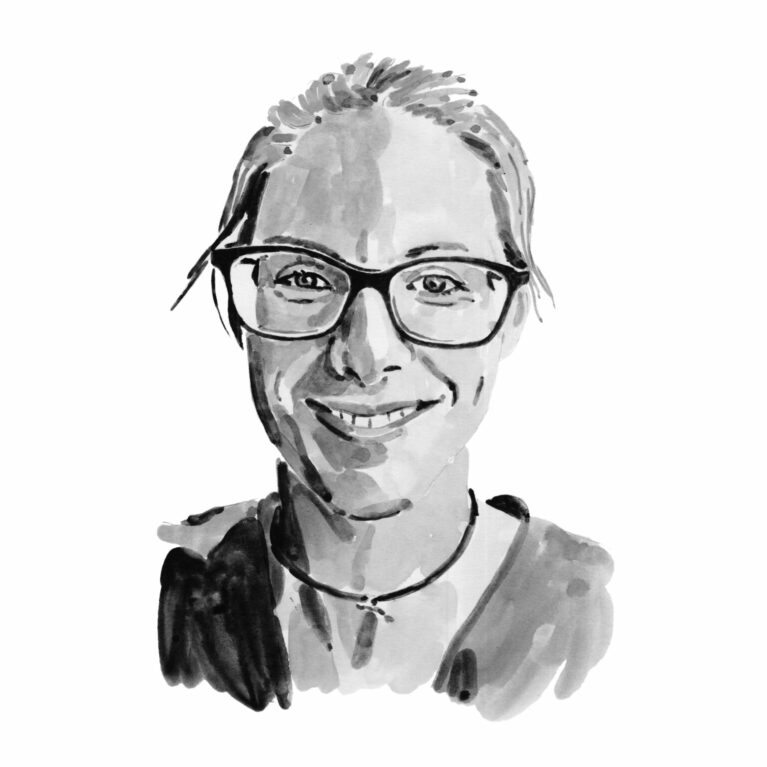Licia Finotto

Who I am
I grew up close to Venice, on the coast of the northern Adriatic Sea, a basin certainly not known for its crystal-clear water or coral reefs. Nevertheless, I have always been fascinated by the ocean and its inhabitants, especially sharks, rays, skates and even chimaeras. I don’t know where this passion originated, but I do know that since my primary school days I dreamed of becoming a shark scientist – and I made it! Learning that elasmobranchs (sharks, skates and rays) are facing severe population declines and are threatened by human activities triggered my interest in their conservation. I have been lucky enough to work on this for most of my career, mainly investigating the consequences of unmanaged, unsustainable exploitation by fisheries. I started working in Italy, studying the life-history traits (reproductive cycle, growth rates and diet) of commercially harvested elasmobranch species to better understand their vulnerability to fishing pressure. Then I moved to Australia to complete my PhD. There not only did I see some of the weirdest and coolest wildlife, but I could also investigate the sub-lethal, long-term consequences of the stress elasmobranchs suffered when caught by fisheries, including changes to their energetic and reproductive systems. Finally I came back to Italy, where researchers of my laboratory group and I are trying to push for the introduction of management measures for shark and ray fisheries in the Mediterranean. Strong support from fishers and the general public is fundamental, so I have also been working on the social aspect of elasmobranch conservation to increase a willingness to protect these animals.
Where I work
I am currently a postdoctoral fellow in the Department of Biology at the University of Padova, in Italy. I work in Chioggia, where most of the research on marine biology is carried out in a separate branch of the university. This city, located in the northern part of the Adriatic Sea, not only sits right on the Venice Lagoon, but also harbours the Mediterranean’s largest fishing fleet. Therefore, this is the place to work if the consequences of the overfishing of elasmobranchs are to be better understood and tackled. Indeed, being on site enables us to build strong relationships with the fishers, monitor elasmobranch catches, collect samples and study these animals. This is the right place not only because of its logistical advantages, but also because it is an important area for these species. The northern section of the Adriatic Sea has been confirmed as a nursery area for many elasmobranch species, including those targeted by fisheries and those unintentionally taken as bycatch. Unfortunately, as well as being intensely fished, this basin is also heavily populated and therefore suffers from high levels of urbanisation and pollution. It is therefore necessary to better understand the abundance and population structure of the elasmobranch species in the area and, most importantly, to know more about their vulnerability to anthropogenic stressors, especially pollution and unmanaged fisheries.
What I do
In my job, no two days are the same. I mainly collect samples and monitor elasmobranch catches aboard commercial fishing vessels. This means that I spend up to three days out at sea, living and working side by side with fishers, learning from their knowledge and experience. This is not an easy task as we follow the fishers’ working schedule, so shifts are very long and hours of sleep are very few. But I am rewarded with beautiful sunrises and sunsets, bizarre marine organisms and amazing science! Some samples and data are also collected at the local fish market, which we monitor twice a week and where we take the opportunity to develop our relationships with fishers. Once all the samples have been collected, they need to be processed and organised. This involves spending quite a lot of time in the laboratory juggling with vials, tweezers, microscopes, reactive chemicals and cutting-edge equipment. Then the resulting data need to be analysed and papers need to be written; that is when I spend a fair amount of time at my desk working at my computer. I also enjoy talking about our findings at events and workshops organised for interested parties. Finally, I am also lucky that I get the chance to travel to different countries to participate in conferences where connections with other researchers are forged. You definitely can’t get bored when you are a marine biologist!
